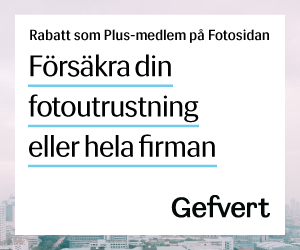macrobild skrev:
Hej
Du har skrivit lite fel.
Du har eller får fortfarande ett skärpedjup som motsvarar 5.6, dvs 5.6 och 400mm , 5,6 och 560mm men minskar ljusinsläppet till film eller sensor pga extendern sitter i mellan till det som motsvarar bl 8.
Mikael
Hej
Jag vet lite OT men dock intressant.
Från John Shaw
You get the depth of field of the "new" lens.
I've heard it said that when you use a teleconverter you get the depth of field of the original f-stop of the lens without converter. Not true. Suppose you have a 300mm f/4 with a 2X converter. If the lens' aperture is set wide open, do you have the depth of field of f/4, the aperture at which the lens itself is set, or of f/8, the aperture created by the converter? If you remember that f-stops are a mathematical ratio between the optical hole in the lens and the focal length, you should know the answer. Since the size of the aperture doesn't change when you add a teleconverter but the focal length does, the lens becomes slower. It is an f/8 lens wide open with the depth of field of f/8 at this aperture. Depth of field depends on the f-stop you're using, not how you get to that effective f-stop.
Från
http://www.photosafaris.com/Articles/ATeleconverter.asp
Kommer från hans bok
Men i realiteten undrar jag lite, då jag har en längre brännvid på 560mm och förkortar skärpedjupet jämfört med 400mm på bländare 5.6.
Så frågan är vilken kombination ger längst skärpedjup 400mm 5.6 eller 400mm 5.6 + 1.4xtc vid 560mm med bländare f/8 och f/8 skärpedjup.
Svaret framgår här tydligt



"Q34. How does a teleconverter affect exposure, focusing, depth of
field and image quality?
A. A lens of focal length f and f-number N with a teleconverter of
magnification K attached will behave in all respects like a lens of
focal length K*f and f_number K*N.
If the aperture diameter and focus are left untouched and an ideal
teleconverter is attached, the lens will focus at the same distance,
the image, including the diffraction effects and lens aberration
effects, will be K times as large, the exposure will need to be K^2
times longer, the hyperfocal distance will be multiplied by K and the
depth of field will be divided by K. A practical teleconverter will
also contribute some of its own aberrations. (See the technical
notes.)
On the other hand, if you open the aperture to keep the same effective
f-number and hence the same exposure time, the image will be enlarged
by K, the diffraction will be unchanged, the depth of field will be
divided by K^2 and the hyperfocal distance multiplied by K^2. The
aberrations are increased by three effects: the lens is opened to a
larger aperture, the teleconverter multiplies those (probably larger)
aberrations by K, and then combines them with some of its own.
Since the focusing is unchanged, the minimum focusing distance is the
same whether or not a teleconverter is attached. (See the technical
notes.)"
Från
http://www.faqs.org/faqs/rec-photo/lenses/faq/
Mvh
Omar







